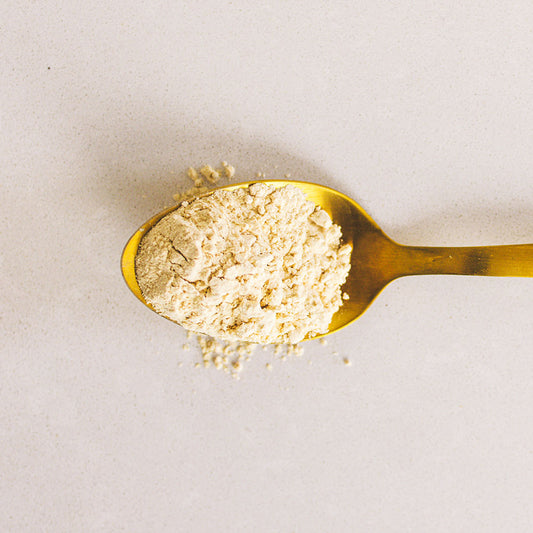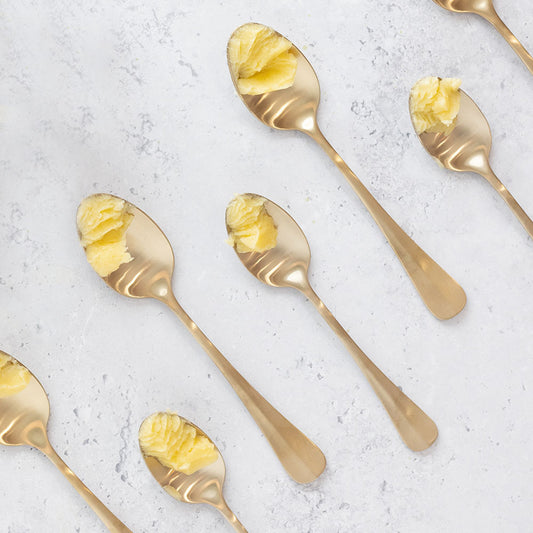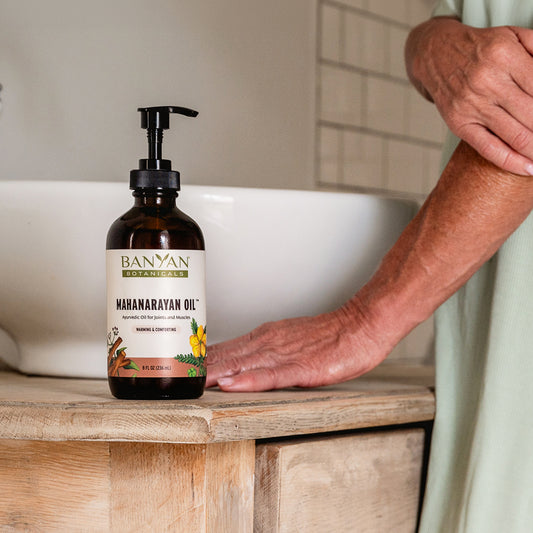Welcome to Birthing Ayurveda, where we follow one woman's pregnancy experience week by week—from a positive home pregnancy test all the way to delivery.
The last month of pregnancy is all about supporting the downward energy (apana vayu) and preparing the passageway. Hopefully by now, you have really focused on grounding yourself with practices like self-massage, getting adequate rest, preparing your nesting grounds and hopefully, like myself, you have put a hold on any further travel. In the last month of the pregnancy, the classical texts of Ayurveda also talk about specific preparations particularly for the passageway.
This article is here as a sharing of what Ayurveda has spoken of and my personal experiences with them. Please make sure you are working with a practitioner for any of these practices, since there may be special considerations for your situation, as there were for mine. For instance, if you are already dilated, if your placenta is low, or if you've had any complications like preterm labor, you need to make sure you are working with a well-trained practitioner that has experience in this area.
The first practice is doing an enema (basti). This practice is done in the eighth and ninth month as a way to support apana vayu. Prior to this time, apana vayu is the last thing you want to stimulate (you want to retain the baby). Even now, giving the baby a little more time to "cook" is important, but so is getting apana vayu prepared. The baby should start getting in position and situated in the pelvis, both of which requires apana vayu. To play it safe, just one enema is the general recommendation unless your practitioner advises otherwise. You may also consider doing one more at the start of labor to again facilitate apana vayu.

In my particular case, I have had a lot of ligament pain and extra loose ligaments in my pelvis—signs of high vata and a lot of the dry quality. Because of this—and after checking with my practitioner—I did an oil retention enema, where I held the oil for at least forty minutes. I ended up doing a couple of these in a week and have continued to do it weekly. I have gauged myself carefully as well (I held off on the third enema during the first week because I started feeling a little more crampy).
The second practice is a vaginal tampon with oil (make sure you have your practitioner's approval). I take some oil on a piece of cotton and keep it in my vagina overnight. This is another way to locally apply oil to the tissues. Notice that oleation of the tissues is the theme! Oil softens tissues, making them more elastic and less resistant.1 I will note here that my pelvic discomfort improved by 90% with this and a few exercises (described in an earlier post)—quite dramatically and immediately. To me this is evidence of how impactful these practices are to decreasing the dry quality in the pelvis.
Lastly, (again with oil!) we started perineal massages. With just a touch of oil, gentle pressure at about 5 o'clock and 7 o'clock of the opening of the vagina will help make the tissue of the perineum more pliable and elastic, making the last part of the delivery more comfortable and with less tearing. Steady pressure is applied for about ten minutes. This is a great opportunity to practice breathing and observing discomforts that will naturally occur with labor and delivery.
Oleate, oleate, oleate! Give your passageway the nourishment and strengthening it needs in preparation for its work to come. You will feel the difference quite quickly.










